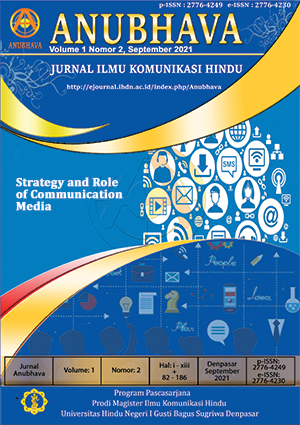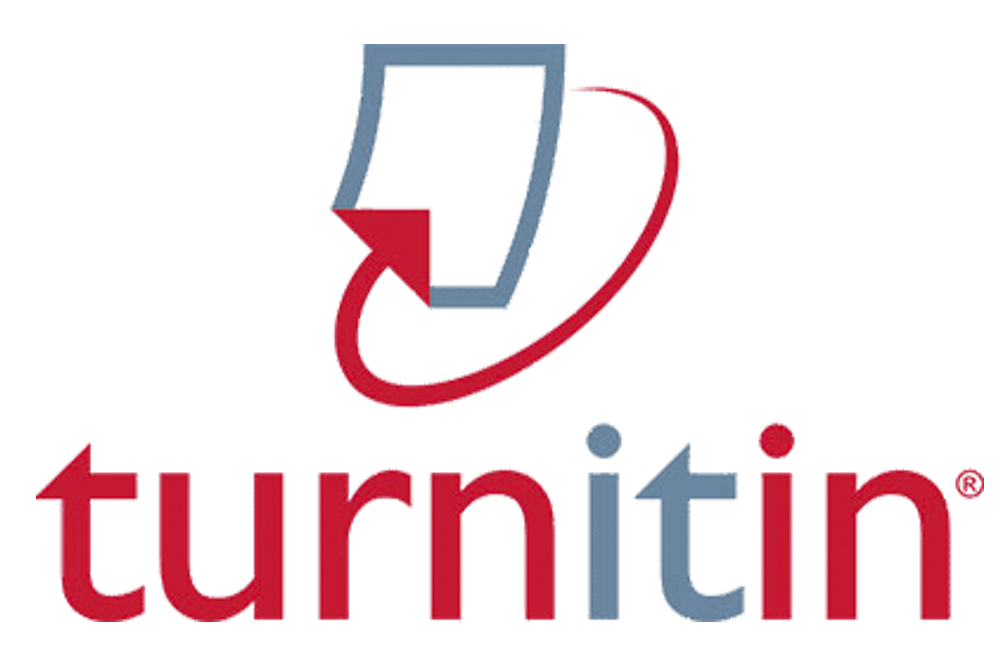PERAN MEDIA KOMUNIKASI DALAM MENINGKATKAN SRADDHA BHAKTI SISWA SEKOLAH MENENGAH ATAS DWIJENDRA DENPASAR
DOI:
https://doi.org/10.25078/anubhava.v1i2.1057Keywords:
Communication Media, SMA Dwijendra, Sraddha Bhakti. Community Radio, Learning Management SystemAbstract
Technological developments bring about major changes to communication patterns, including in the world of education. Compared to before, now students consisting of generation Z are more interested in delivering dynamic materials that can be accessed from anywhere. Responding to these challenges, the Hindu-based Dwijendra Denpasar High School (SMA) seeks to optimize the distribution of religious messages through the use of communication media. This study aims to analyze how far the communication media can play a role in improving students' sraddha bhakti. Researchers used three theories, namely Agenda Setting, Mathematical Communication, and Constructivism. This type of research is qualitative descriptive with a sociological approach. The research subjects were the school as communicators and students as communicants. Methods of data collection through participatory observation, structured interviews, document studies, literature studies, and online searches. The results showed that communication media consisting of Dwijendra Community Radio, audio-visual media, and Learning Management System (LMS) had an important role in the distribution of information related to sraddha bhakti. The media has advantages in terms of effectiveness, efficiency, concrete, and motivation. Barriers that arise in the role of communication media consist of technical barriers which include facilities and infrastructure, semantic barriers that include message content, and human barriers that arise from communication actors. The strategies applied by the school to improve the role of communication media include mapping problems, taking action on obstacles that occur, and optimizing the role of communication media using redundancy, canalizing, informative, educational, coercive, and persuasive methods. The evaluation shows that the role of communication media has positive implications for increasing students' knowledge, skills, and attitudes of Sraddha Bhakti.
References
Ardianto, Elvinaro dan Erdinaya, Lukiati Komala. 2005. Komunikasi Massa Suatu Pengantar. Bandung: PT Remaja Rosdakarya.
Arismunandar. 2006. Manajemen Pendidikan (Peluang dan Tantangan). Makasar: State
Daryanto. 2010. Media pembelajaran. Yogyakarta: Gava Media.
Effendy, Onong Uchjana. 1990. Ilmu Komunikasi Teori dan Praktek. Bandung: PT. Remaja
Lunandi, A.G. 1992. Meningkatkan Efektifitas Komunikasi Antar Pribadi. Yogyakarta: Kanisius.
Mulyana, Deddy. 2007. Ilmu Komunikasi: Suatu Pengantar. Bandung: Remaja Rosdakarya.
Muslich, Mansur. 2007. KTSP. Pembelajaran Berbasis Kompetensi dan Kontekstual. Panduan
Nurudin, 2003. Komunikasi Massa, Yogyakarta: Pustaka Pelajar.
Rakhmat, Jalaludin. 2010. Psikologi komunikasi. Bandung: Remaja Rosdakarya.
Rastati, Ranny. 2018. Media Literasi Bagi Digital Natives: Perspektif Generasi Z di Jakarta. Jurnal Teknologi Pendidikan. Jakarta.
Soekanto, Soerjono. 2002. Teori Peranan. Jakarta: Bumi Aksara.
Subagiasta, I Ketut. 2008. Sraddha dan Bhakti. Surabaya: Paramita.
Sutirman, 2013. Media & Model-model Pembelajaran Inovatif. Yogyakarta: Graha Ilmu
Vera, Nawiroh. 2014. Semiotika dalam Riset Komunikasi. Bogor: Ghalia Indonesia.
Wursanto. 2005. Dasar-Dasar Ilmu Organisasi. Yogyakarta : Andi.
Internet:
Yayasan Dwijendra. 2019. Visi Misi SMA Dwijendra Denpasar [online]. Diakses dari https://bit.ly/38K5PsN, tanggal 16 Nopember 2019.
Jdih Kominfo. 2012. Peraturan Menteri Komunikasi dan Informatika Nomor 39 Tahun 2012 tanggal 4 Oktober 2012 [online]. Diakses dari shorturl.at/cjFM5, tanggal 20 Juni 2020.
Downloads
Published
Issue
Section
License
Copyright (c) 2021 Anubhava: Jurnal Ilmu Komunikasi HIndu

This work is licensed under a Creative Commons Attribution-NonCommercial-NoDerivatives 4.0 International License.
Anubhava: Jurnal Komunikasi Hindu is licensed under a Creative Commons Attribution-ShareAlike 4.0 International License. Permissions beyond the scope of this license may be available at Anubhava: Jurnal Ilmu Komunikasi
















